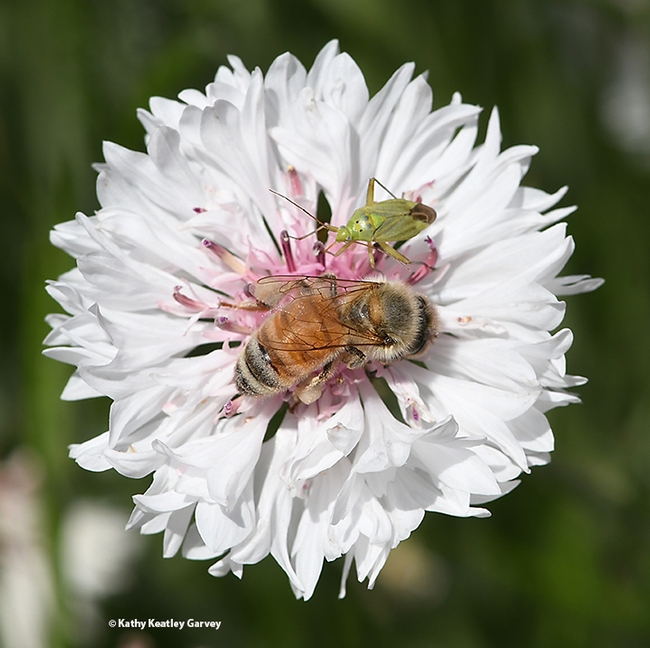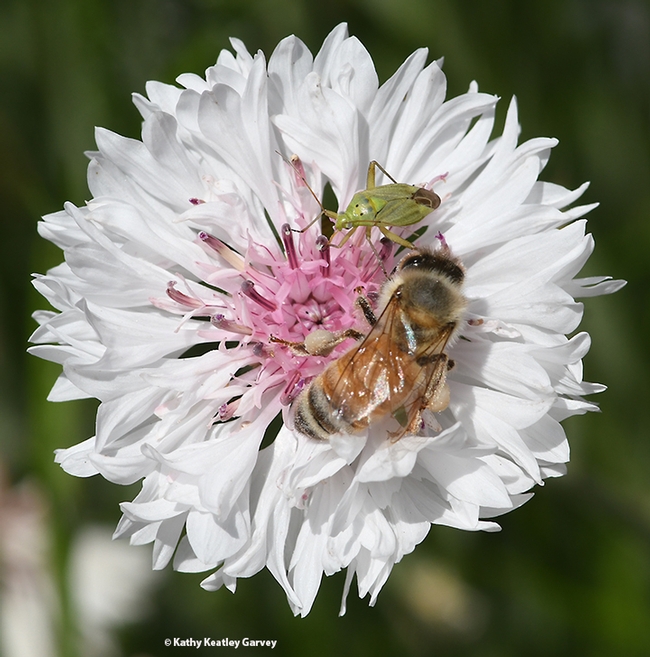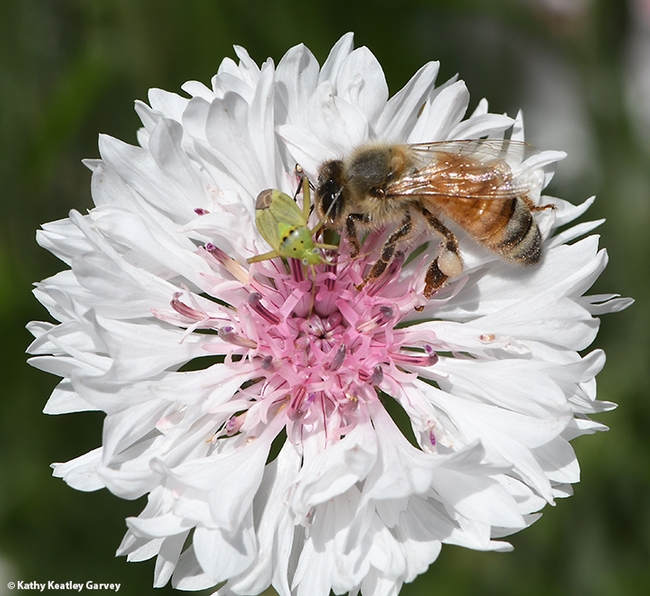- Author: Kathy Keatley Garvey
The alliteration doesn't get much better--bees buzzing on breathtaking berry blossoms.
Berry blossoms are in full bloom in the UC Davis Ecological Garden of the Student Farm, part of the UC Agricultural Sustainabilty Institute.
The Ecological Garden is "a half-acre garden comprised of flowers, vegetables, herbs, fruit trees, vines,insectary plants, chickens, California native plants, worm composting, and aerobic composting systems," according to the website. "Students maintain the space as they learn and share gardening techniques and general principles of ecological horticulture. In addition to the diverse plantings, the Ecological Garden program includes seed saving efforts, self-taught medicinal herb processing and use, and flower production. The Ecological Garden is the central site for the Kids in the Garden Program that hosts farm field trips for school groups and also the site for workshops and activities of the UC Davis School Gardening Program."
It's also a site where entomology students of Lynn Kimsey, director of the Bohart Museum of Entomology and a UC Davis distinguished professor with the Department of Entomology and Nematology learn about about insects. Her field trips are quite popular.
And the bees? They may very well "bee" from the apiary at the Harry H. Laidlaw Jr. Honey Bee Research Facility on Bee Biology Road.
So there you have it. Bee Biology Bees Buzzing on Breathtakingly Beautiful Berry Blossoms.
A berry, berry good sign of spring!
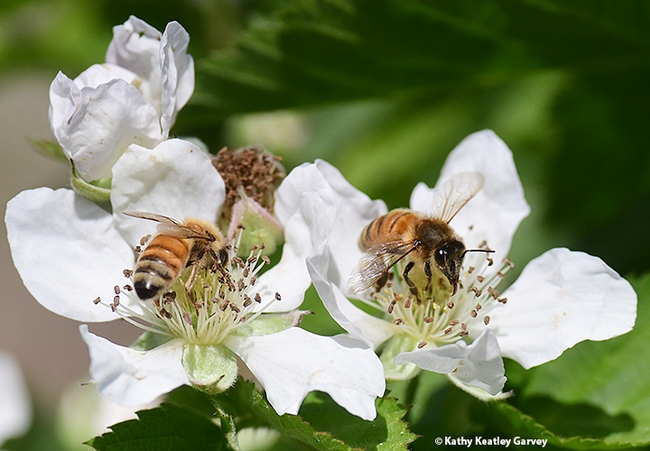
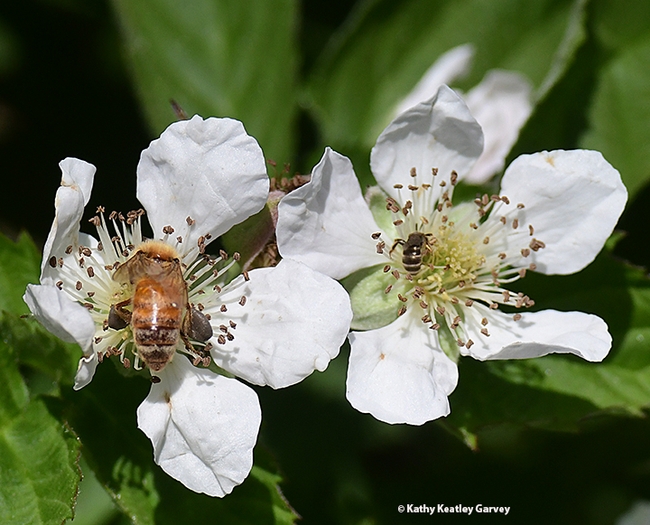
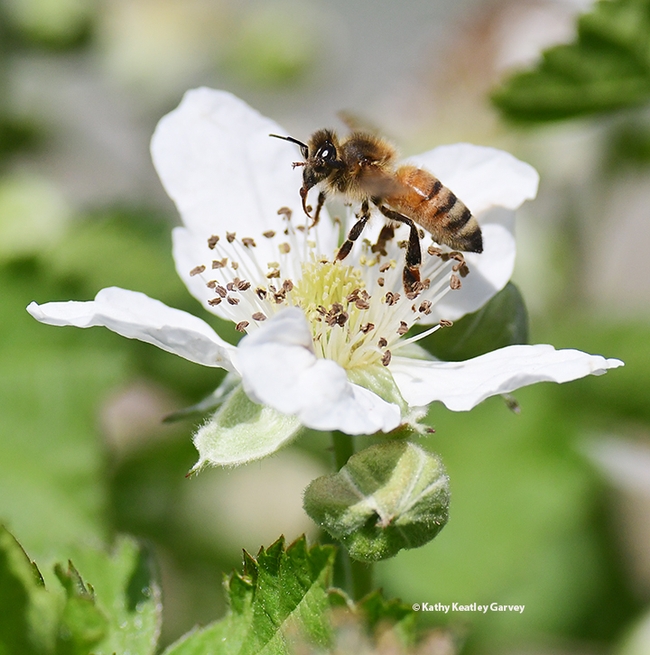
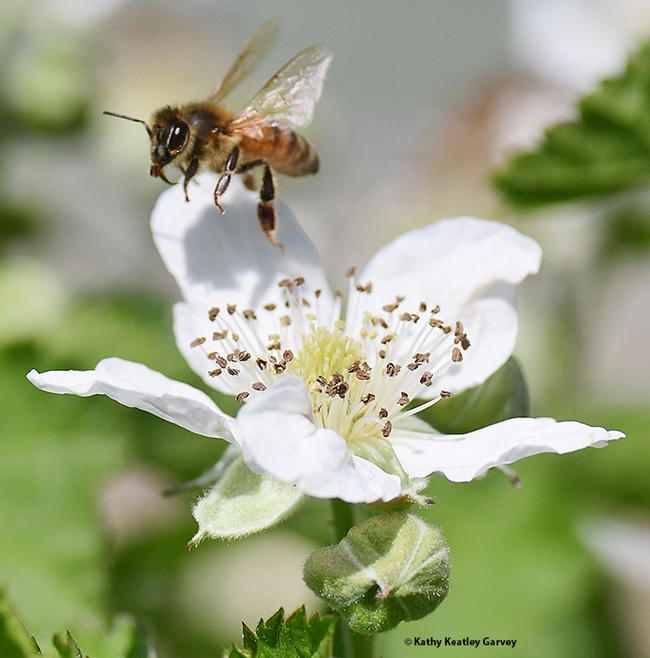
- Author: Kathy Keatley Garvey
It's Day 7--the last day--of National Pollinator Week. Meet a longhorned bee, Svastra obliqua expurgata, family Apidae. It's also known as a sunflower bee.
"It's a bee that prefers sunflower but will collect pollen from a variety of members of the Aster family," the late Robbin Thorp, UC Davis distinguished emeritus professor of entomology and a native pollinator specialist, told us several years ago.
He co-authored the book, California Bees and Blooms: A Guide for Gardeners and Naturalists (along with UC-affiliated colleagues Gordon Frankie, Rollin E. Coville and Barbara Ertter), a must for everyone who wants to learn about bees and blooms.
We remember seeing these native bees nesting underground by the U.S. Bank in Davis in 2015. See Bug Squad blog.
Katharina Ullmann circled the site with yellow caution tape and posted an educational sign. Ullmann, who received her doctorate in 2014 from UC Davis, worked as a national pollinator specialist for the Xerces Society of Invertebrate Conservation before accepting her current position as director of the UC Davis Student Farm in 2017.
"This is a sunflower bee nesting site," wrote Ullmann. "These gentle bees are native and ground nesting. The females of this species are solitary bees, but like to nest near each other and often use the same nest entrance. Their nesting tunnels lead to individual chambers below the ground. Each chamber is filled with pollen, a single egg, and then closed off. These eggs will hatch, develop underground, and emerge next summer to build their nests. This sunflower bee is one of 1600 species of native bees found in California."
The sign included a "name tag" with the common name, scientific name, favorite food (pollen and nectar), favorite place to be (3rd St., Davis), favorite colors (yellow, red and orange) and favorite saying (YOLO, You Only Live Once).
Ullmann added--and good advice then and now, especially during National Pollinator Week: "Three things you can do to help this bee: (1) protect nests, (2) plant flowers and (3) use fewer insecticides."
Or better yet, no pesticides.

- Author: Kathy Keatley Garvey

At a recent visit to the UC Davis Ecological Garden at the Student Farm, we watched a honey bee, Apis mellifera, and a lygus bug nymph, Lygus hesperus, foraging on a batchelor button, Centaurea cyanus.
The bee: the beneficial insect.
The lygus bug or Western tarnished plant bug: a pest.
The lygus bug, which punctures plant tissues with its piercing mouthparts, was there first, but no matter. The bee joined in, edging closer and closer until they touched.
In photography insect circles, that's a "two-for"--two insects in one image.
The bee finally buzzed off, leaving the lygus bug to "dine" alone.
The lygus bug, distinguished by a conspicuous triangle on its back, is a very serious pest of cotton, strawberries and seed crops, including alfalfa. Scientists estimate that in California alone, the pest causes $30 million in damage to cotton plants each year, and at least $40 million in losses to the state's strawberry industry. The insect is also a pest of numerous fruits and vegetables, including apples, pears, peaches, eggplant, tomato, potato, artichoke, lettuce, sugarbeet, and beans. See what the UC Statewide Integrated Pest Management Program (UC IPM), says about the pest.
What do they look like? "Adult lygus bugs are green, straw yellow, or brown with a conspicuous yellow or pale green triangle on their backs," UC IPM says. "Nymphs are light green...Lygus can move into gardens or orchards from weeds, especially when they dry up. They are a particular problem in beans, strawberries, and orchard crops, feeding on developing flower buds and fruit. Fruit may become blemished and discolored, deformed, or twisted and may develop depressions or pustules."
Cotton? "Lygus bugs," says UC IPM, "migrate to cotton from other hosts, so management of this pest begins with assessing its populations outside the field. Check for them on weeds, in nearby alfalfa, and in other crops, and keep in touch with your pest control adviser, Extension agent or Farm Advisor for area-wide information on lygus bug populations. Proper management of alfalfa harvest can reduce damaging migrations to cotton."
Cooperative Extension specialist Ian Grettenberger, UC Davis Department of Entomology and Nematology, works closely with farmers in their lygus bug battles.
